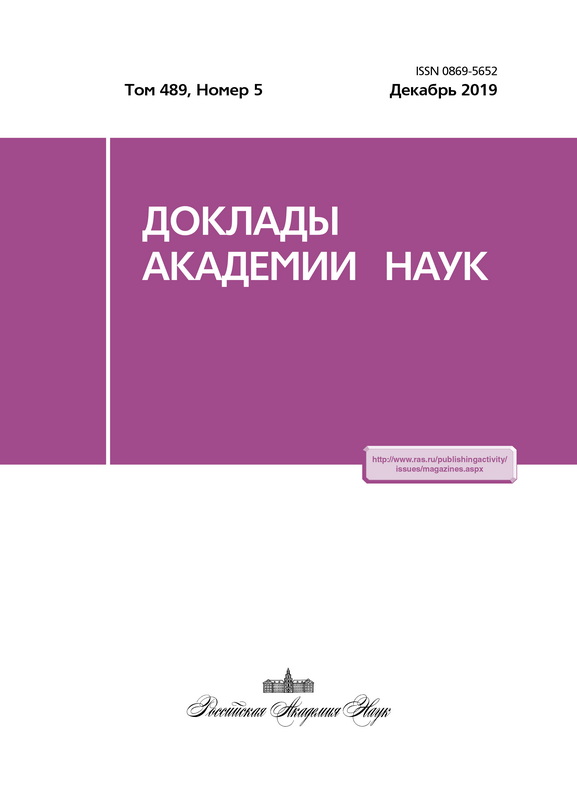Theoretical and experimental method for determining elastic characteristics of nanomaterials
- Authors: Fomin V.M.1,2, Filippov A.A.1
-
Affiliations:
- Khristianovich Institute of Theoretical and Applied Mechanics, Siberian Branch of the Russian Academy of Sciences
- Novosibirsk State University
- Issue: Vol 489, No 5 (2019)
- Pages: 469-472
- Section: Mechanics
- URL: https://journals.eco-vector.com/0869-5652/article/view/18840
- DOI: https://doi.org/10.31857/S0869-56524895469-472
- ID: 18840
Cite item
Abstract
The method allows determining the mechanical characteristic of nanoobjects was presented. A heterogeneous material consisting of a nanophase and a binder phase was considered, the mass and volume concentrations of components were given. Heterogeneous material is reduced to homogeneous by averaging methods while the mechanical characteristics will be associated with averaged ones. Assuming that the mechanical characteristics of the binder and averaged homogeneous materials are known from mechanical tests, the system of equations allow us to determine the mechanical characteristics of nanoobjects included in this heterogeneous material. It is believed that the mechanical characteristics of bonding and averaged homogeneous materials make it possible to obtain equations of equations that allow one to determine the mechanical characteristics of nano-objects present in this heterogeneous material. Classical mechanical tests were carried out, describing the uniaxial stress and strain states of materials, which made it possible to obtain an analytical form the dependences of the mechanical characteristics of nanophases depending on their size. Specific examples are given for silica dioxide nanoparticles (Aerosil and Tarkosil powders).
About the authors
V. M. Fomin
Khristianovich Institute of Theoretical and Applied Mechanics, Siberian Branch of the Russian Academy of Sciences; Novosibirsk State University
Author for correspondence.
Email: fomin@itam.nsc.ru
Academician of the Russian Academy of Sciences
Russian Federation, 4/1, Institutskaya street, Novosibirsk, 630090; 1, Pirogova street, Novosibirsk, 630090A. A. Filippov
Khristianovich Institute of Theoretical and Applied Mechanics, Siberian Branch of the Russian Academy of Sciences
Email: filippov@itam.nsc.ru
Russian Federation, 4/1, Institutskaya street, Novosibirsk, 630090
References
- Коч К., Овидько И., Сил. С., Вепрек С. Конструкционные нанокристаллические материалы. Научные основы и приложения. М.: Физматлит, 2012. 448 с.
- Головин Ю.И. Наноиндентирование и его возможности. М.: Машиностроение, 2009. 312 с.
- Кривцов А.М., Морозов Н.Ф. // ДАН. 2001. Т. 381. № 3. С. 345-347.
- Кривцов А.М., Морозов Н.Ф. // Физика твёрдого тела. 2002. Т. 44. № 12. С. 2158-2163.
- Кривцов А.М., Морозов Н.Ф. // Сб. статей к 90-летию со дня рождения А.Ю. Ишлинского / Под ред. Д.М. Климова. М., 2003. С. 485-488.
- Кустов М.Е., Кустов Д.М., Антонов В.А. // Инженерная физика. 2018. № 2. С. 21-24.
- Вахрушев А.В., Шушков А.А. // Хим. физика и мезоскопия. 2011. Т. 7. № 3. С. 278-285.
- Вахрушев А.В., Шушков А.А., Зыков С.Н. и др. // Хим. физика и мезоскопия. 2014. Т. 16. № 4. С. 214-218.
- Елецкий А.В. // Успехи физических наук. 2007. Т. 177. № 3. С. 233-274.
- Дремин А.Н. // Прикладная механика и техническая физика. 1960. № 3. С. 184-188.
- Torquato S., Yeong C.L.Y., Rintoul M.D., et. al. // J. Am. Ceram. Soc. 1999. V. 82. № 5. P. 1263-1268. https://doi.org/10.1111/j.1151-2916.1999.tb01905.x
- Vaganova T.A., Brusentseva T.A., Filippov A.A., et. al. // J. Polym. Res. 2014. V. 21. № 588. https://doi.org/10.1007/s10965-014-0588-z
- Brusentseva Т.А., Filippov A.А., Fomin V.М., et. al. // Mech. of Comp. Materials. 2015. V. 51. № 4. P. 531-538. https://doi.org/10.1007/s11029-015-9523-6
- Warfield R.W., Cuevas J.E., Barnet F.R. // Rheologica Acta. 1970. V. 9. № 3. P. 439-446. https://doi.org/10.1007/BF01975414
- Filippov A.A., Fomin V.M., Karpov E.V. // AIP Conf. Proc. 2019. V. 2125. P. 020014-1-020014-8. https://doi.org/10.1063/1.5117374
Supplementary files







